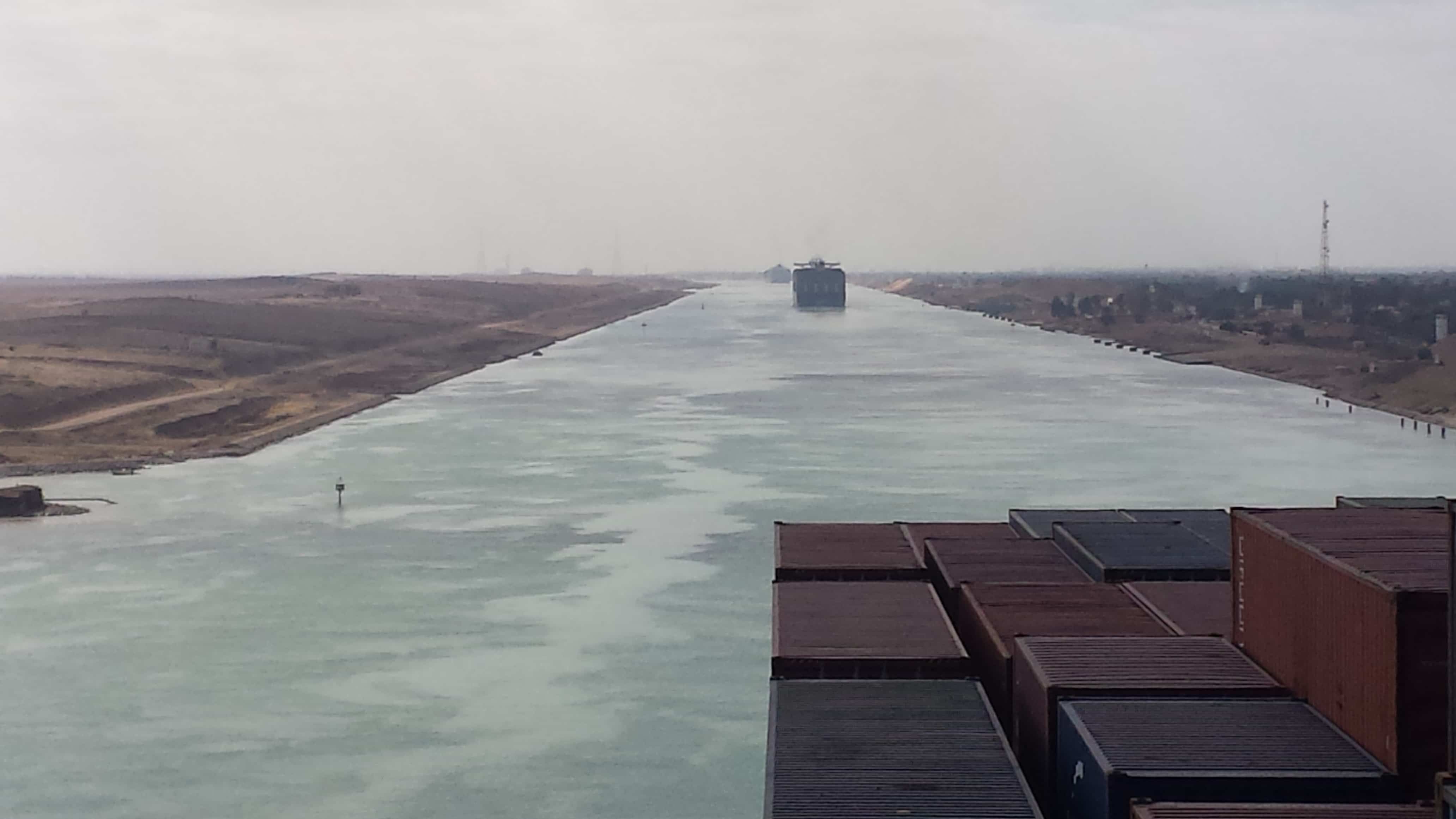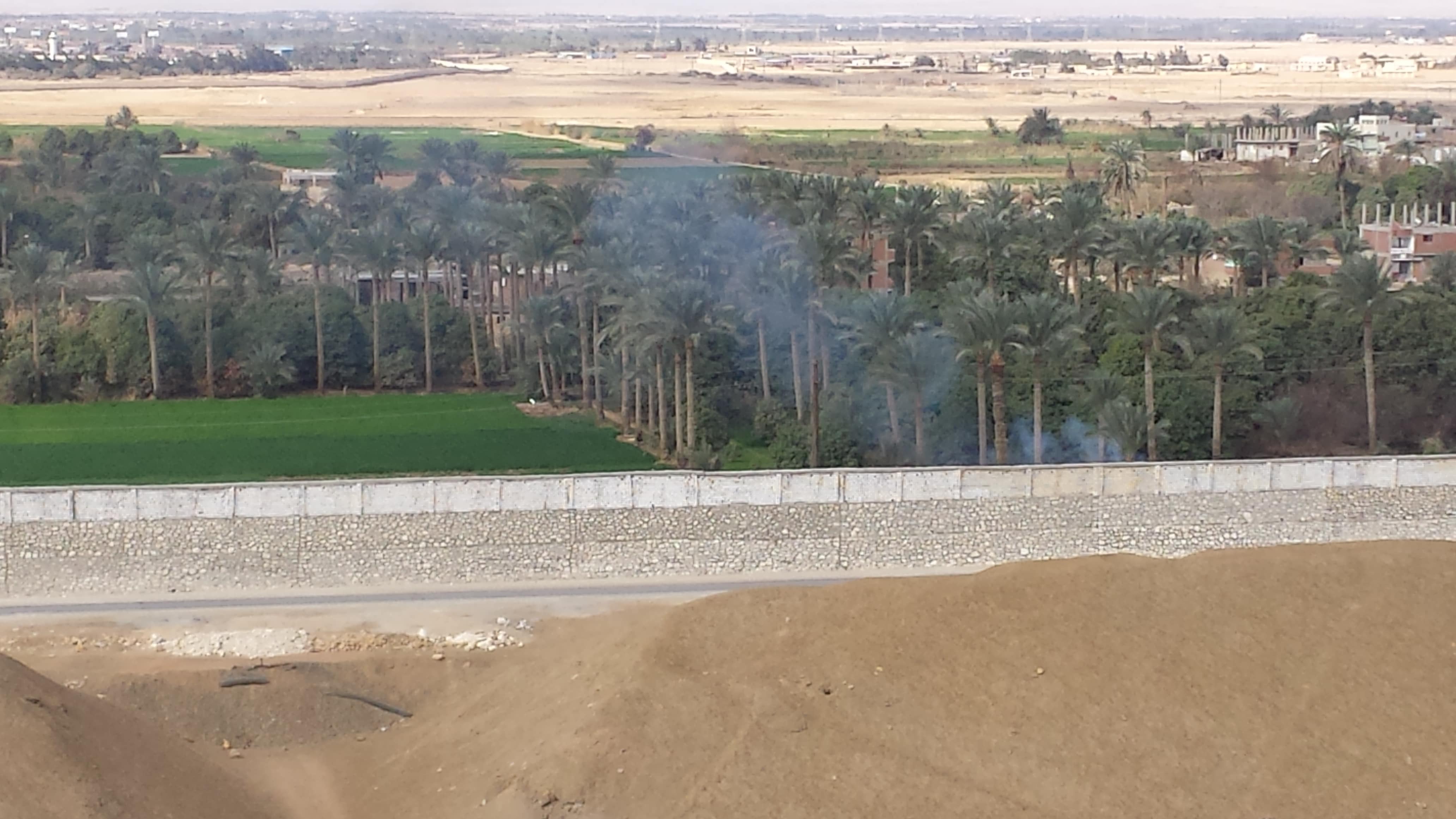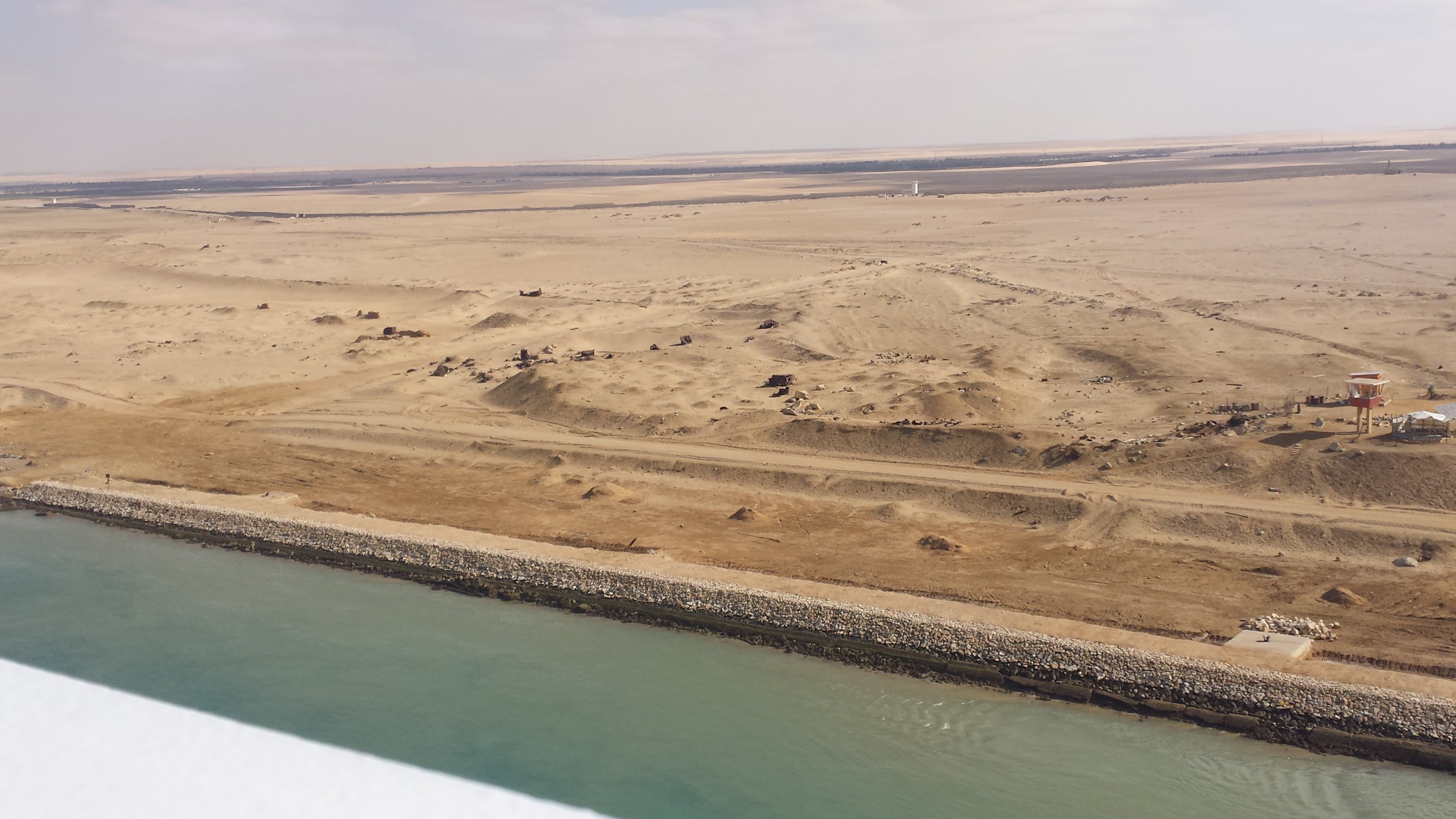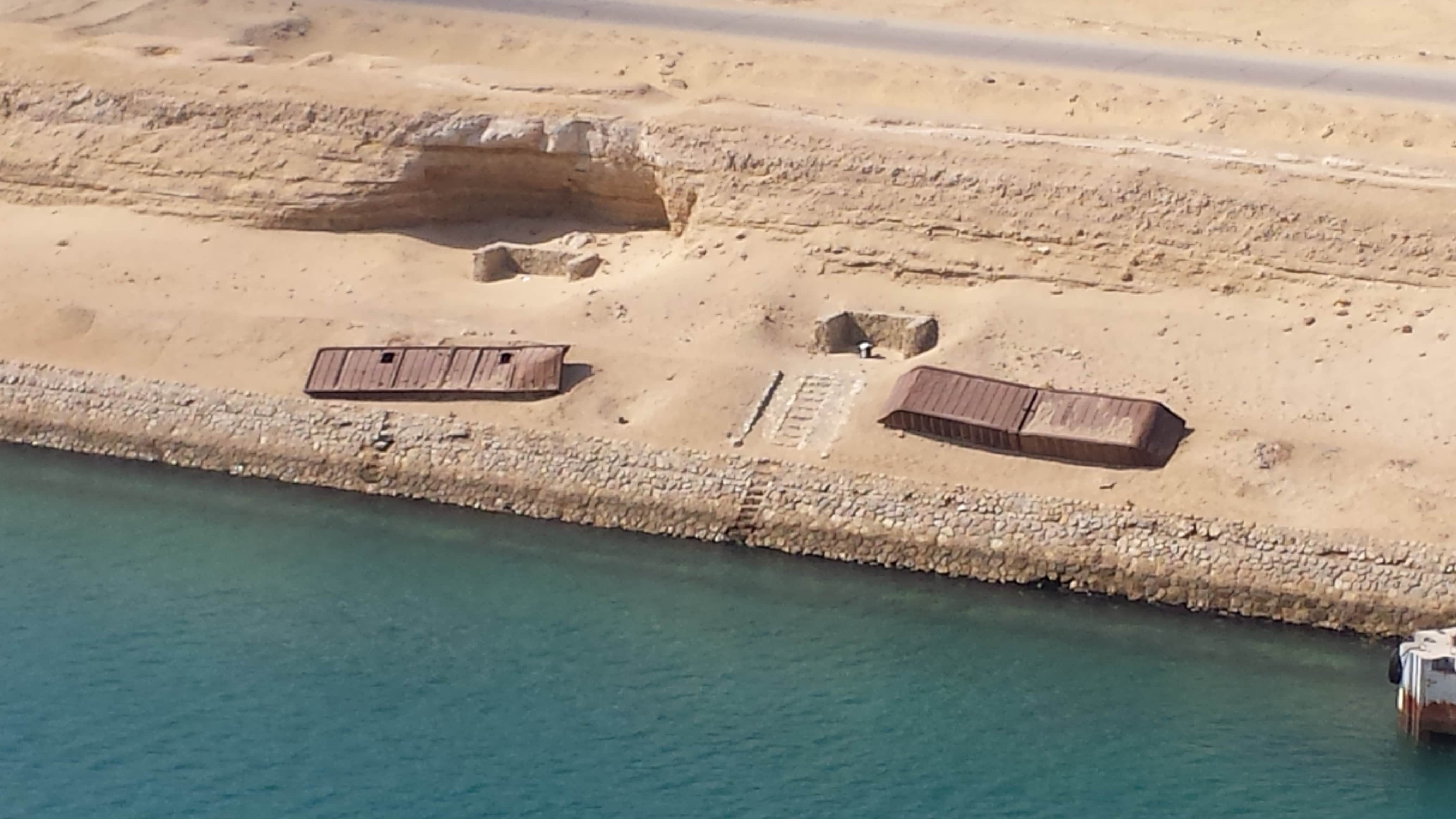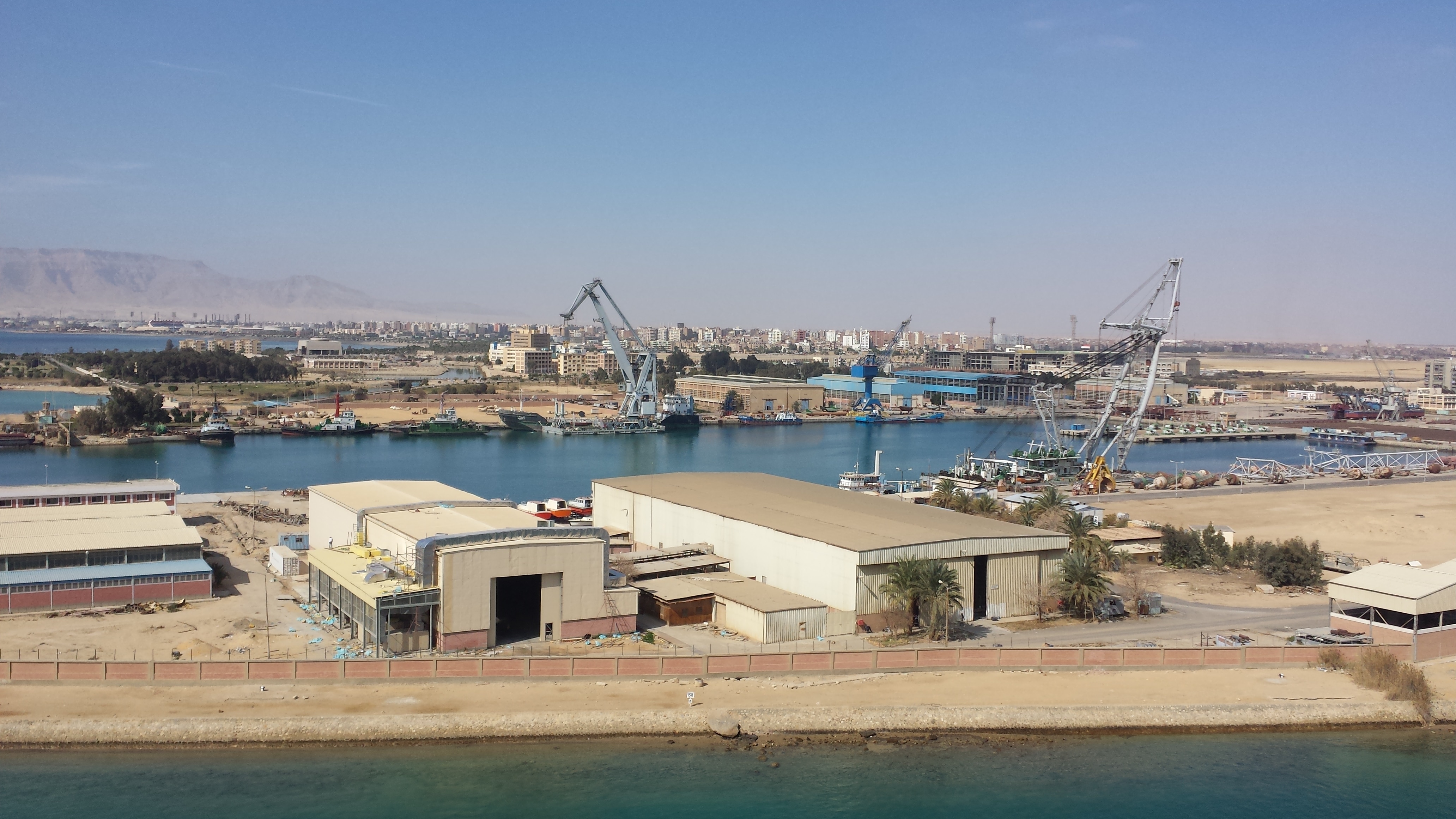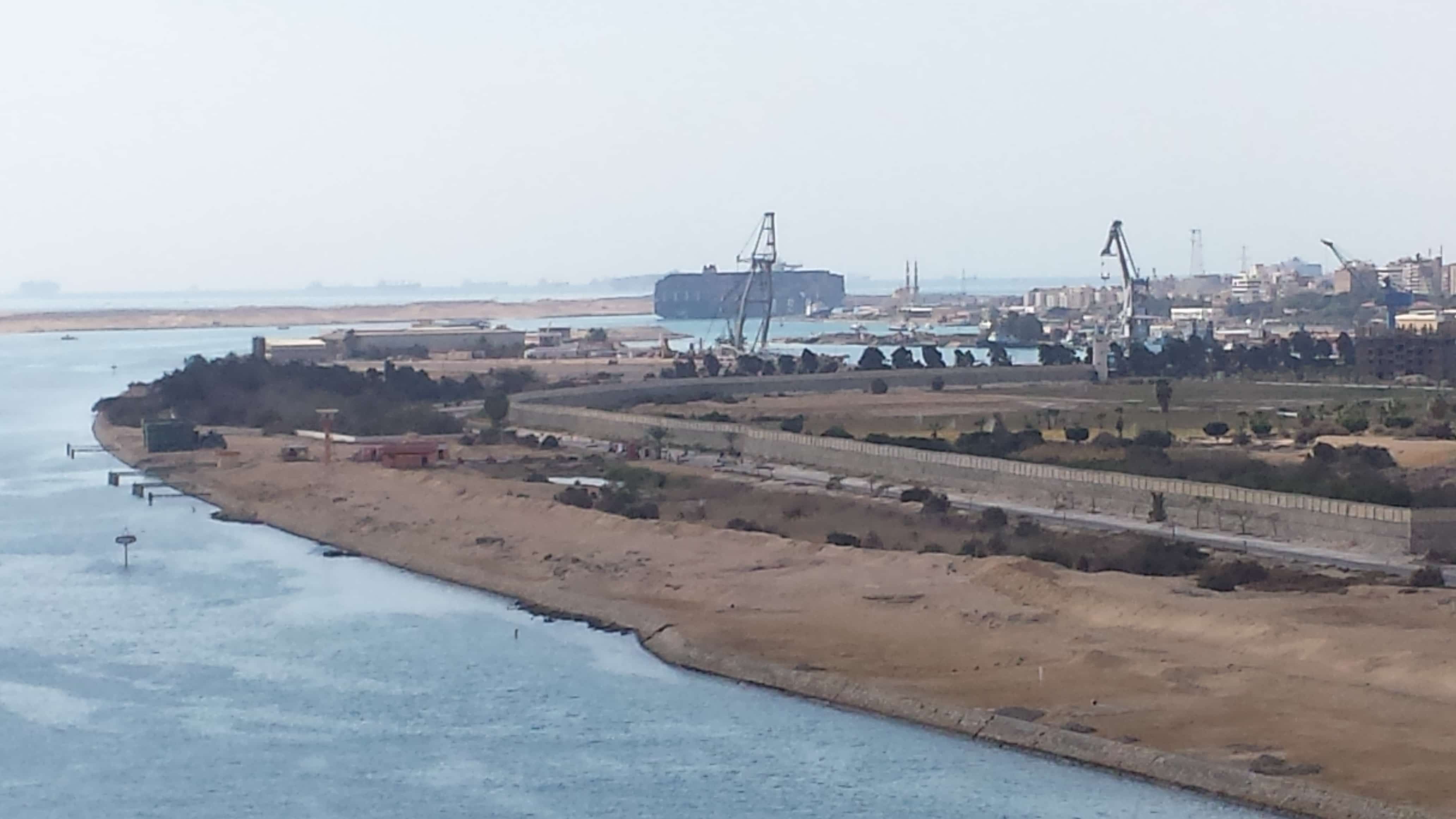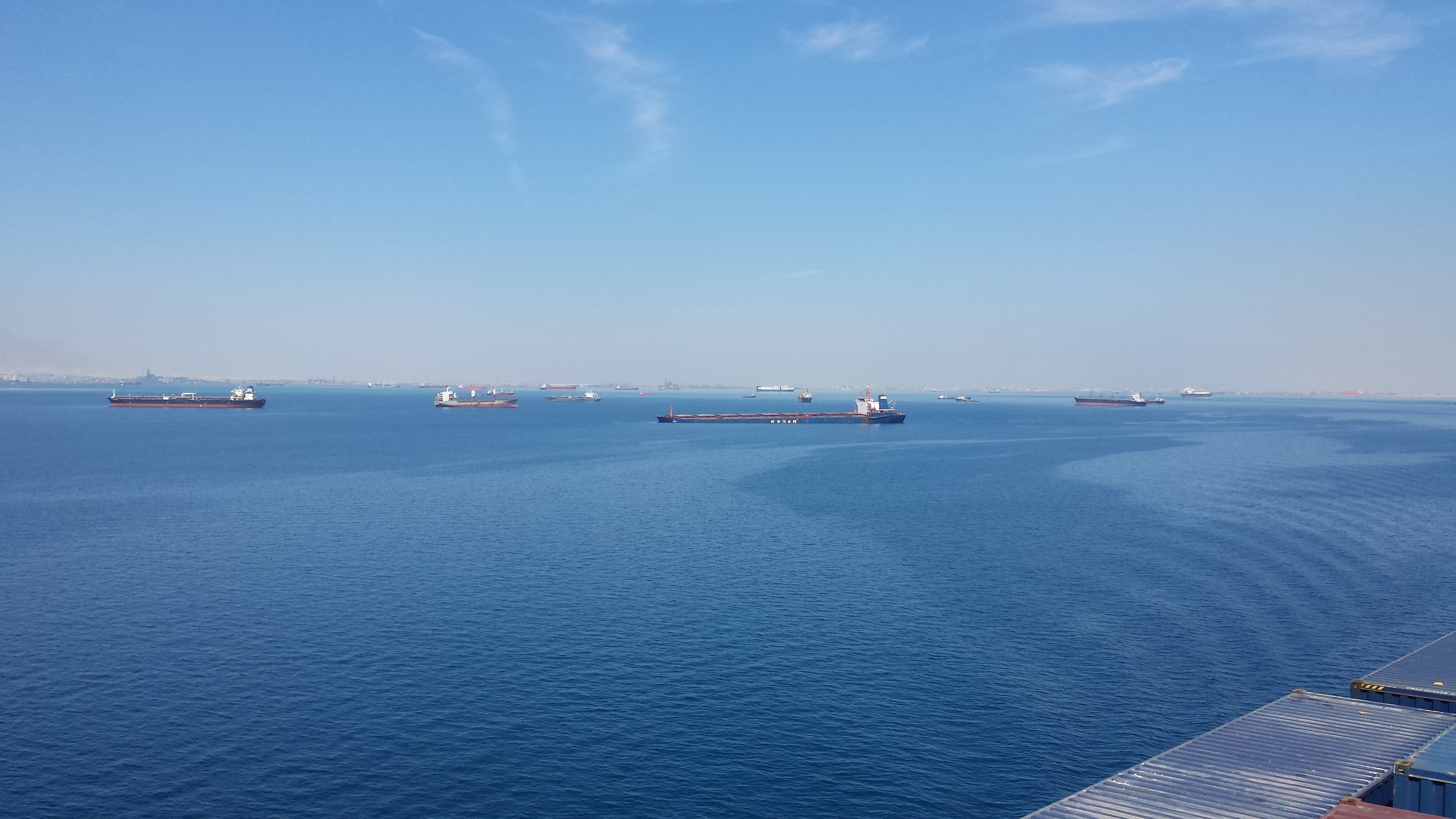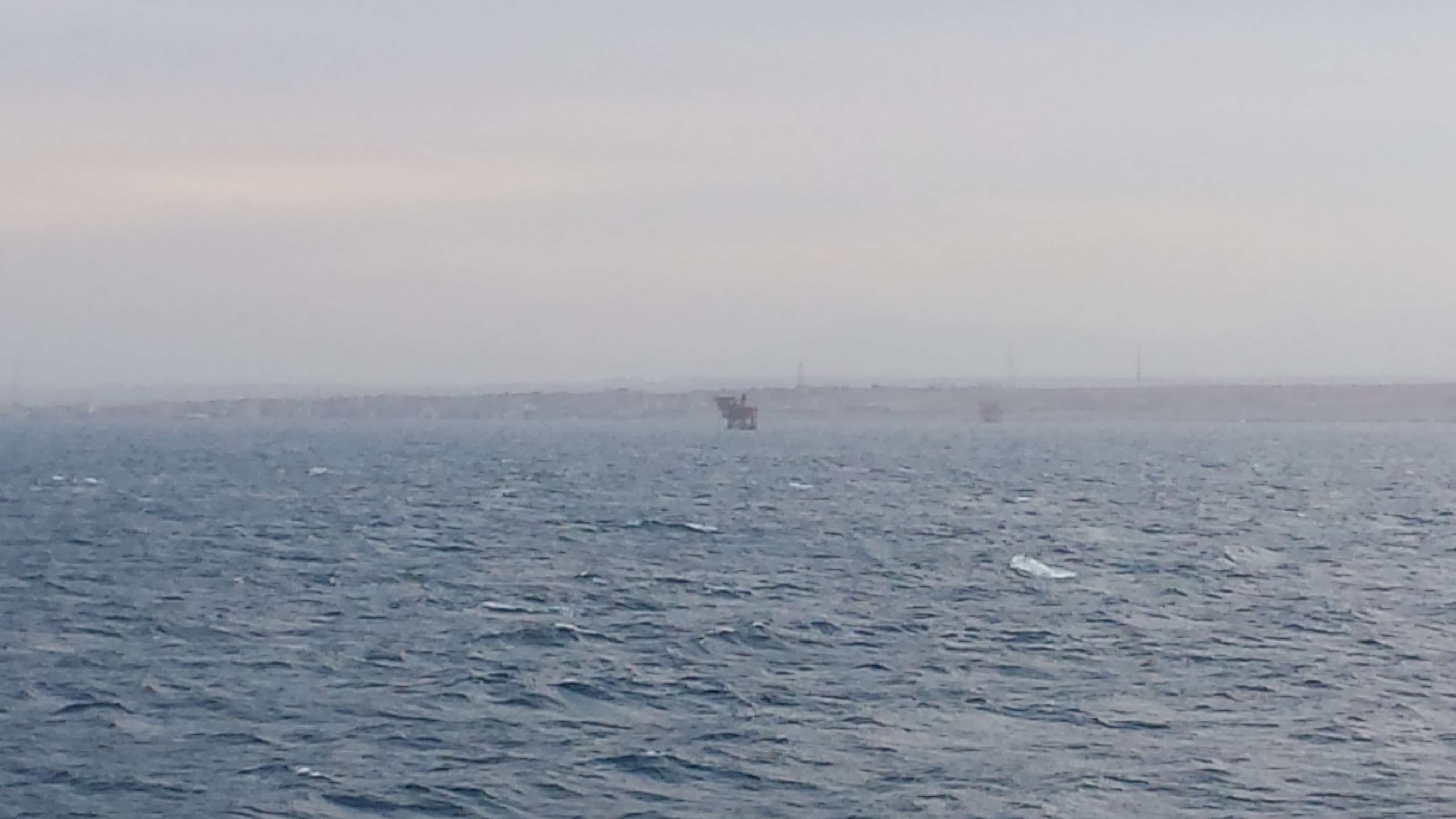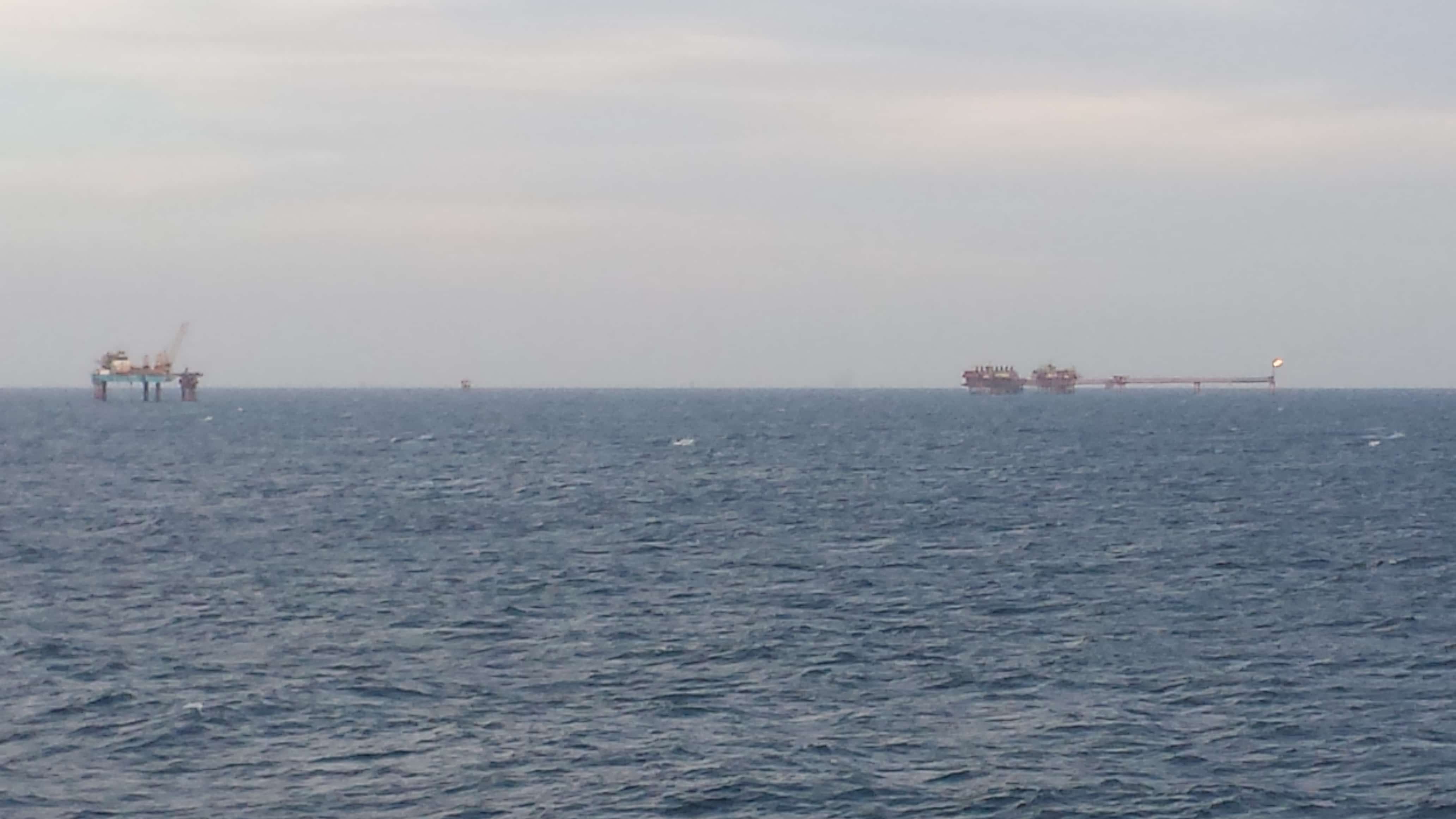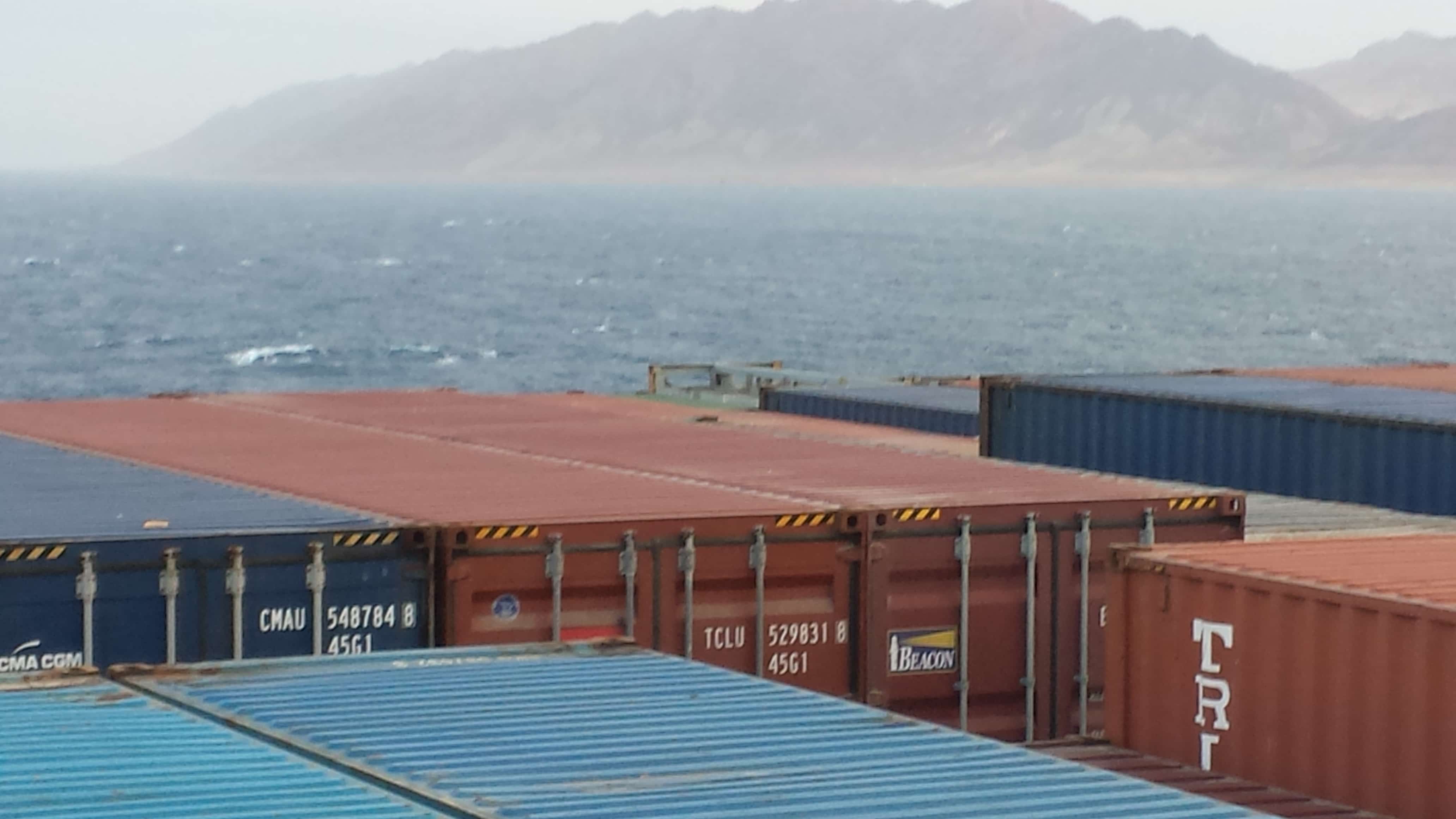Shim El-Yasmine: Suez Canal
8 February 2015
“the great current of human inclination is to enjoyment.” Karl Marx, Capital Vol. II
I want to be more jaded. After all, my nautical venture is an all-expenses-paid research trip – the best of both worlds: doing what I love and a leisurely adventure unlike much else in the world. I stare at the sea and do that thing which annoys me in other people’s writing: see the shiveringly romantic, the gorgeous transhistorical sea which gets at you somewhere in your viscera, evoking some sort of primordial memory even in a landlocked soul. I see the seduction of large ships and of a kind of fragment of infinity. Then, I read Ravi Ahuja’s “Capital at Sea, Shaitan Below Decks?” and am horrified by the lives of those historical sailors. I speak to the lovely smiley Croatian second engineer, the son of a professor of biology from the island of Korcula, who went to sea to adventure, and he tells me that when he retires, “I am never going to move. I will stay where I am and go nowhere!” I ask him what he will do with the sea? How will he divorce himself from the sea? He reluctantly acknowledges the lure, the seduction, but his response is “I will buy a 5 metre long boat and go fishing.” So, I don’t want to romance the sea.
Then there is Allan Sekula, whose every word resonates with me in ways no one else’s does: “Harbors are now less havens (as they were for the Dutch) than accelerated turning-basins for supertankers and container ships. The old harbour front, its links to a common culture shattered by unemployment, is now reclaimed for a bourgeois reverie on the mercantilist past.” Is my seduction by the sea a kind of “bourgeois reverie”? Surely it is a bit of that. And yet, how can I not? I am not alone, surely. Even the jaded Foucault (who, Sekula mentions approvingly, wrote about metaphorical containers as a means of discipline). Even Melville who suffered at sea and whose novels are chronicles both of torment and of joy. Sekula mentions a rhetorical device Engels uses in his Conditions of the Working Class: to contrast life in the working class slums of the 19th century (“repulsive, disgraceful,… brutal indifference”) with the magnificence of maritime Thames with its bank of ships. So, even Engels.
Even Sekula himself goes back to the sea, and even if he writes about “the maritime world as a space of class conflict,” there is a bit of machine love in his images of ships and of containers, of the sea itself. He may not be into the sublime, but the technological sublime has brushed his camera lens. About Turner’s maritime sketches and paintings, Sekula writes: “This is not to reduce the Turneresque sublime to a simple technological determinist explanation, but rather to suggest that a painted sky that presumed the wind to be a motive force had a different referential status from one in which steam and smoke were introduced as evidence of new powers.”
You always have to see Sekula’s images in a series: because there are those epic images of the technological sublime which he manages to capture in modern panorama (not the sea or the sky, but the concrete harbour and the monstrosity of a ship’s hull) – all brought down to size by accompanying images of the labour that makes them. Sekula is fascinated, seduced even. How can you not be seduced by the maritime life (not just the sea; but the movement of humans and ships, ideas and dreams upon the surface of the water)? How can you not retain something of a curiosity –even if critical and distant- about the epic technological transformations that so change the maritime spaces?
This is all of course intensified in me by the passage through Suez, which is as much about the technological sublime and the majesty of human labour –all those lives destroyed digging this canal; all those dead bodies; all the imperial accumulation by dispossession; all the corvée labour, all the malaria, yellow fever, and illness and exploitation– as it is about the gorgeousness of crossing through the desert on water. But what is really amazing is the ceremonial feel of the process as we –a convoy of 29 ships– magisterially move through the Suez Canal in this slow stately procession. The fact that all the officers are dressed in their fineries and full uniform also intensifies the ceremonial feel of the passage.
Sadly, I couldn’t be there when we entered the channel just east of Port Said, one after another, our ship behind the MSC ship we had seen yesterday and ahead of a massive chemicals carrier. The entry happened at 02.30 and I was then sleeping fitfully drugged with cold medicine for my terribly-timed illness. But I was up at 07.00 and on the bridge. And discovered yet another ill-timed disaster: my camera’s memory card has been corrupted, and my camera does not have internal memory – which I didn’t know because the camera was new. So I have had to-for the part of the journey I was most anticipating- use my crappy phone camera which in the sunshine does not focus very well and I have no way of adjusting for shutter speed and aperture and all the other fancy things I was just beginning to learn. I am, of course, immensely annoyed at myself for not having bought an additional memory card when I bought the tripod in Heathrow. And now, the tripod and the fancy camera are no use – unless the “slop chest” by some miracle includes memory cards. I can’t even play at imitating Allan Sekula now.
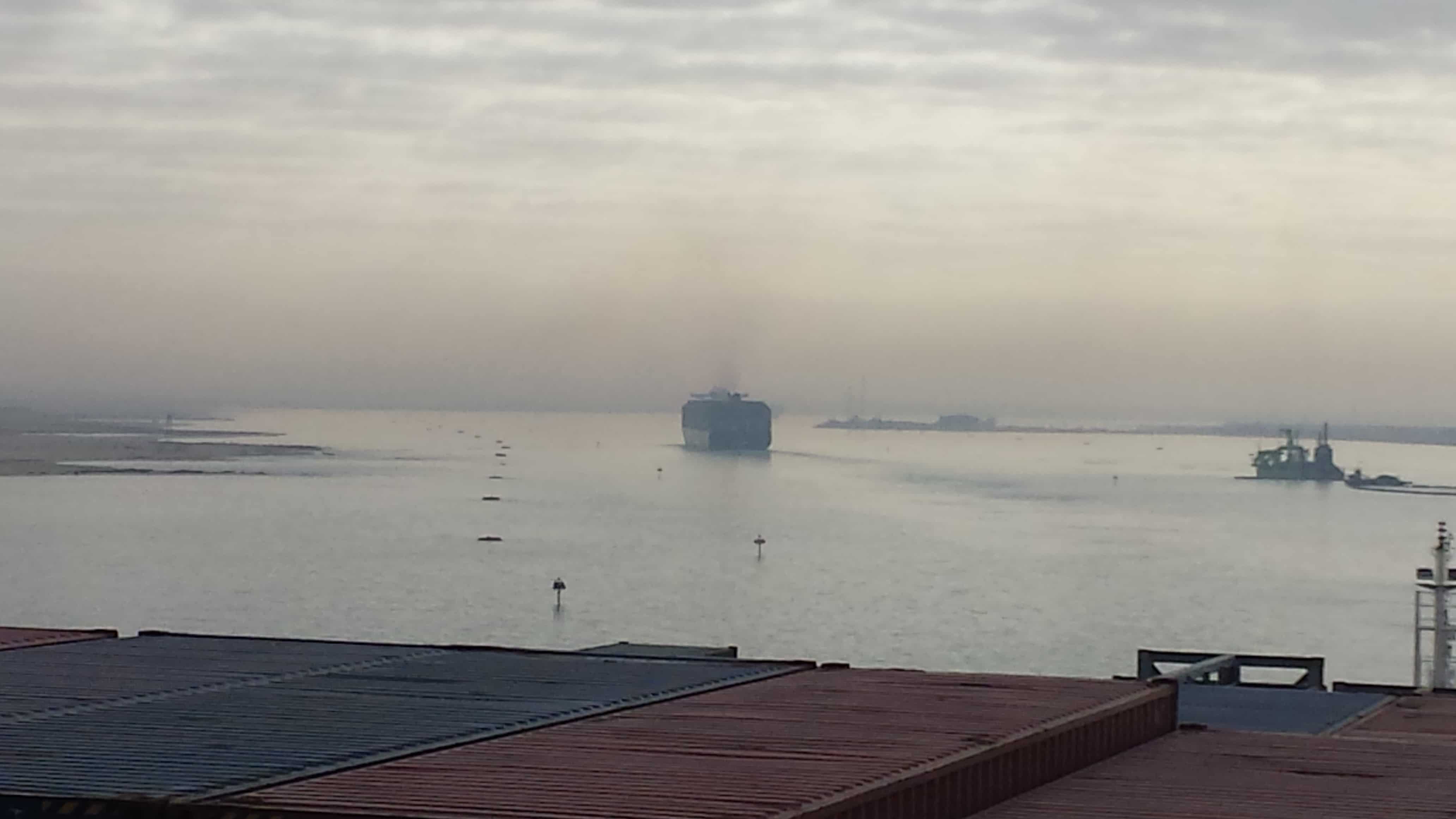
Steaming in a narrow channel in convoy through the Great Bitter Lake
No matter. By 08.00 we were in the Great Bitter Lake, traversing a narrow channel in the lake well marked by buoys. The intensity of the passage is something to behold. The ceremonial feel of the whole process was only a tiny bit relieved by the loud cackle of the two very funny Egyptian pilots who didn’t realise there was someone on the bridge who spoke Arabic. In the last minute, I decided not to reveal myself, worrying that they may think I am some sort of spy (I mean how would they place me? I am dark haired and a Khalili; they can presume that I am some sort of Israeli spy; or an Iranian one. But I have a British passport; so I can also be a nefarious British spy). The lovely deck cadet told me that on one of the previous trips he had been on, a journalist whipped out his camera and starting photographing the banks of the canal; the pilots apparently stopped the boat and caused a huge amount of trouble. It is rather terrifying the ease and comfort with which the citizenry assumes the role of spycatcher as part of its routine.
What is most striking about the passage is how incredibly militarised the canal’s banks are. I had visited the canal before at Port Said and didn’t remember how the entirety of the bank on the African side is one long defensive barrier: lofty sand berms; expansive no-man’s-lands; and a high stone wall with watchtowers at very frequent intervals. And every kilometre or so a small military outpost. And all these military edifices –appropriately in the yellow, beige, brown colours of desert camouflage– separate the rather preposterously verdant narrow band of settlement –with its sound of car-horns, dogs and donkeys– from the canal, the entirety of the route. There is one particular military pontoon bridge station that has EGYPT PEACE written on the sand berm with stones. Hmm.
On the Sinai side, things are a lot more forlorn. You still see desolate military outposts and bleak sentry boxes that look like white beehives every kilometre or so, and occasional sand-berms –this, of course, after the Great Bitter Lake. And you also see burnt out hulks of tanks; surely they can’t be the debris of war? I recall that the canal had been blocked until 1975 by drowned tanks and other military hardware. I wonder if some of these rusty hulks had been dredged from the canal on its reopening, now forty years ago. One feels a lot of pathos looking at the skinny conscripts marching to and fro in the sun in the middle of nowhere, holding their weapons to their shoulders: from atop the ship, they look so young and fragile. And the feeling is intensified when at one outpost, I can clearly see the young soldier not really paying attention to what goes on around him and instead checking something on what I can assume from the glint in the sun to be his phone’s screen.
What is as noteworthy is the Sinai side before the Great Bitter Lake (I love that name!). The entirety of the Sinai side is one excavated hive of activity with dirt trucks climbing huge hills of earth that has been dug up. The Captain said that until only six months ago, the Sinai side had been a flat and barren plain, and now it is this vast movement of earthworks: the new Suez Canal for which the order of things in the Canal is being disturbed (ignore the laudatory tone of the link; everyone seems to be seduced by Sisi’s new project, including the BBC). All the ship’s officers were astonished about the speed with which the digging seemed to be happening, and it certainly was an interesting sight to behold. The flatlands now heaved upside down, the yellow dirt in masses, and the constant movement of trucks away from the hills. I suppose if a ship our size pays $700,000 to go through the Canal, a two-way canal would facilitate higher earnings. But then where do these earnings go?
The arrival at the port of Suez comes too quickly for my taste. I could have stood there watching our procession for so many more hours – this extraordinary circulation of goods through this narrow space in the sunshine. As we approach Suez, the Suez crew and electrician let down their boat and after some vigorous waving at women they clearly had not expected, they were off. The pilots, much more phlegmatic about women passengers, also said their goodbyes and went all the way down to the Upper Deck on the port side, where the gangway was let down for them – without a net! And as the pilot boat came closer and closer to the ship and as the two pilots climbed down precariously, I was a bit worried for the chubby pilot who seemed to go down much more cautiously, precarious step after precarious step, and who needed a bit of help jumping from the gangway to the moving boat, where the skinny pilot had bounded down in a much more sprightly fashion, jumping on the pilot boat unaided. But rather amazingly, the pilots, not even shod in lifeboats, managed to get off without incident and then we were off in the Bay of Suez – a little after 11.30.
I would have imagined that was the end of it, but in fact the most breathtaking feat of steering of the ship was to only begin then. I hadn’t quite realised that the only channel deep enough to accommodate a ship with a draught as deep as ours (more than 16 metres) was actually a crooked searoute, a bit like the road through the woods in Hansel and Gretel, treacherously weaving around massive anchored containerships and oil tankers, zigzagging on an invisible road that made no sense, avoiding wrecks (marked on the map) and other hazards not marked on the map. The officers had to run back and forth to check for the position of the now irregular buoys to ensure that as we turned hard right or hard left through invisible switchbacks we wouldn’t plough through the buoys.
It was only after we had put all the anchored ships behind us, and the road (according to the traces left by the convoy ships ahead of us) seemed a bit more direct that the Captain untucked his uniform shirt and went downstairs to get changed into more casual clothing.
Passing through the Bay of Suez
8 February 2015
Now that we are past Suez, the ship has a Sabbath feel to it. The ship’s office on the Upper Deck is empty; there is no one working on the decks; and there is some sound coming from the lower deck, but it could just as easily be the noise of goods rolling inside the containers or else the containers groaning. The ship is going at extraordinary speed – at 100 rpm (what Allan Sekula calls “the speed of an amphetamine-driven human heart”) and 23.5 knots. For the great majority of the way, we can see both coasts, the African coast of Egypt and the mountains in the cloud and haze of Sinai. We are closer to the African coast, keeping to a narrow searoute, as we are flanked on both sides by well-heads, shallow waters, and oil fields.
I manage to capture the flared gas of the Ramadan oil fields. There are others; right in the middle of the Bay, and also on the African coast. Hadn’t quite realised that this was such a major oil production area.
The Bay is very busy earlier in the afternoon with crude and chemical carriers and weighted containerships racing towards the Canal; although if the same schedule as last night is kept, they shall have to anchor and await tomorrow’s early afternoon convoy. We are followed by loads of boats, but we leave them all behind as silently and determinedly we race towards the Red Sea.
